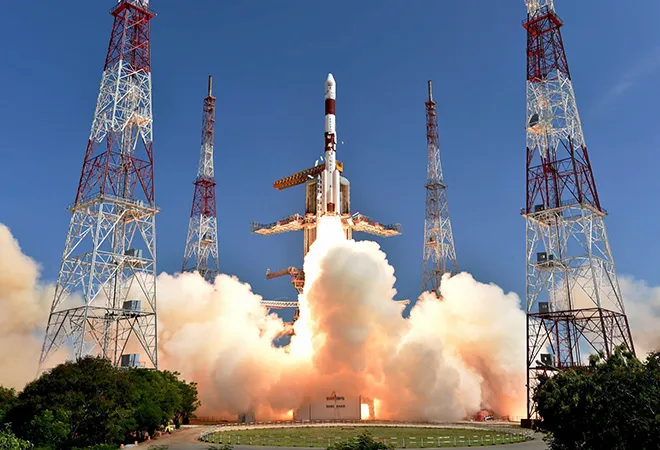The second operational flight of India’s Geosynchronous Satellite Launch Vehicle (GSLV) is a success. It improved the reliability of the indigenous cryogenic upper stage that helped insert the South Asia Satellite in its intended orbit. Over the course of the announcement of the launch of this satellite, India overcame the impediments to revitalising the South Asian Association for Regional Cooperation (SAARC) while the Indian Space Research Organisation (ISRO) succeeded in realising a long pending objective.
Prime Minister Narendra Modi had asked ISRO in 2014 to develop the SAARC satellite that can be dedicated to India’s neighbourhood as a gift from the country. SAARC was the foundational framework that underpinned Modi’s ‘Neighborhood First’ policy when he assumed office, and he intended to include space diplomacy in this framework.
As envisioned by Dr Vikram Sarabhai, space technology played a critical role in transforming India’s social and economic conditions. As a leading power, it is now incumbent upon India to extend the benefits of space technology to its neighbouring countries that are developing. In return, a peaceful and prosperous neighbourhood only augments India’s political and economic potential in the region, as well as enables it to play a meaningful role in global affairs.
While Bangladesh, Sri Lanka, and Afghanistan flagged certain technical and policy issues before giving consent, Pakistan’s objections to the SAARC satellite were geopolitical. Its seemingly unsolvable conflict with India led it to be the only country left out of the project, which has now been launched as the “South Asia Satellite”. Pakistan was consistent in objecting to a string of connectivity initiatives proposed under the SAARC framework, compelling India to shift its priority towards other regional and sub-regional frameworks that are more promising.
That year, when Modi called upon ISRO to undertake this satellite project, the organisation was yet to see promising results from its indigenous cryogenic engine programme. The Russian cryogenic engines gave more failures than successes while the indigenous cryogenic engine tested in 2010 was also a failure. After a hiatus of nearly four years, ISRO successfully launched GSAT-14 using the indigenous cryogenic engine in January 2014. It took another flight in 2015 to finalise development and testing with ISRO declaring the flight in 2016 as the first operational launch of GSLV. These flights bolstered the reliability of this launch vehicle to carry the South Asia Satellite, as prestige is also an overriding factor in this mission.
ISRO plans to launch GSLV at least two times every year. After the South Asia Satellite, it is scheduled to launch Chandrayaan-2 and other critical space missions. Routinisation of GSLV is significant for ISRO to concentrate on the development of next-generation launch vehicles and augmenting their launch capacity in order to end India’s reliance on foreign launch vehicles for carrying its communications satellites.
Modi has invited the neighbouring countries to also utilise the positioning and navigation services offered by the Indian Regional Navigation Satellite System with the final satellite set in place in 2016. This is, in essence, fulfilling India’s responsibility towards distribution of global public goods. Space applications acquired this status when the United States opened its Global Positioning System for civilian use across the world in the 1990s.
Remote sensing is another application area that will grow in demand. Such demand for space applications and products will only burgeon across India’s neighbourhood in the near future. India should follow up the ‘gifting’ of these services with a relevant policy framework enabling India’s space industry to better market and distribute space services not only in India’s neighbourhood, but the Global South too.
This commentary originally appeared in DNA.
The views expressed above belong to the author(s). ORF research and analyses now available on Telegram! Click here to access our curated content — blogs, longforms and interviews.




 PREV
PREV


